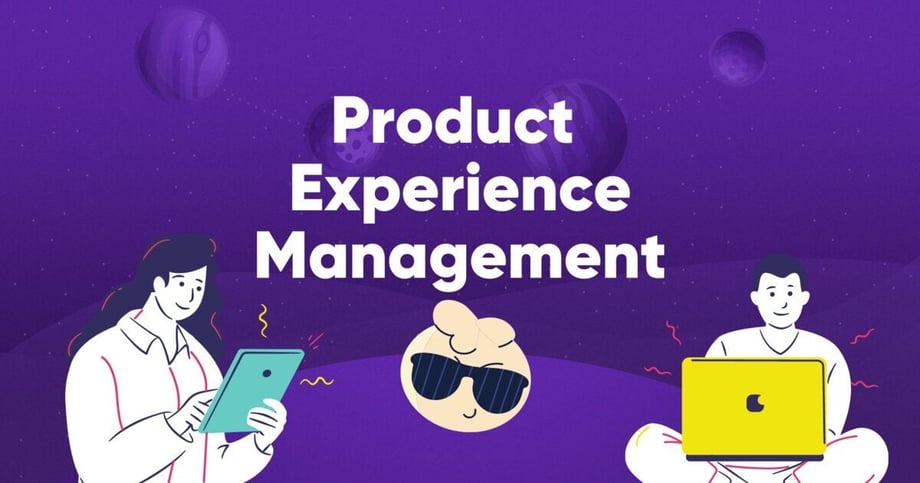
Marketing & Sales aren’t the only departments that benefit from product experience management. It also boosts the collaboration and productivity of your internal teams
Streamline collaboration and boost productivity with smart PxM!
A great customer experience is no longer just a desirability. It’s no longer something that’s nice to have. It’s an absolute must in the ever-evolving world of commerce. No wonder that more and more companies are jumping on the bandwagon of implementing a PxM system or Digital Experience Platform (DXP). It allows them to deliver product information in context – whenever and wherever it is needed. This helps boost conversions, build loyalty, and grow market share …
But did you know that external marketing and sales aren’t the only areas that benefit from PxM? Let’s shed some light on the inhouse use of engaging product content! We’ve examined how a central content hub lets you streamline collaboration and fast-track the productivity of your company-internal teams.
What is Product Experience Management?
Product experience management (PxM) is mostly used to provide sales and marketing channels with product information. Beyond that, it also integrates data from other sources such as CRM, ERP, and marketing automation solutions. Contextual data such as location, device and social data are frequently used as well. Taking all the information your company has about your products and customers into account, a PxM delivers engaging, personalized, multichannel or omnichannel experiences. Go ahead and find out!
Why use a Product Experience Portal (PXP) for inhouse operations?
Many enterprises pride themselves in having a massive volume of content and media assets at their disposal – and that’s great. At least, until you need to access them. The data is usually stored, managed and updated by individual departments and teams. But how do you get an overview of all your assets? And more importantly, how do you seamlessly collaborate on them?
The solution is a central content hub that acts as a home base for your product information. An advanced PXP like Pimcore offers even more than just the storage of data, though. It gives you a 360-degree view of your assets, and it provides intuitive features that support collaboration and keep complexity low. It streamlines and simplifies the tasks of your internal sales, marketing and product development teams.
Good to know: In our infografic, you can get an overview of the most important facts regarding Product Experience Management.
Main functions of a Product Experience Portal:
- centralize product data essentials
- research product information and related media assets
- share and export product information
The benefits of a central content hub for internal teams
Many enterprises are still organized in topic-level silos. But whether it’s marketing, sales or product development: They all need real-time access to up-to-date, high-quality product information and related media assets at the click of a button. Here's the problem: In most cases, these internal target groups do not have access to the PIM system. Information found on customer-facing channels such as the website, Google, Amazon or Facebook usually doesn't suffice. What those stakeholders need is in-depth, often not-publicly-available, and yet-to-be-released product information.
If this describes the status quo in your organization, a Product Experience Portal (PXP) such as Pimcore is the way to go. A PXP acts as a product-centric brand portal or content hub for all your product information and media assets. It gives inhouse teams the possibility to research, find, view, share and often also edit and revise product information. If required, you can even grant external stakeholders such as marketing agencies access to all your files or certain segments of them.
Since a PXP provides a single source of truth for internal product information including high usability, it’s a self-evident extension to an existing PIM strategy. The advantages are manifold:
- better product data quality
- a faster time-to-market
- quicker turnaround times
- improved collaboration between departments and teams
- increased productivity through the elimination of data silos
- access to information in context
- an enhanced user experience
PxM: a recipe for success
A robust PxM is an indispensable commodity for brands and enterprises – whether it’s for their inhouse collaboration on product information or for external sales and marketing measures. When choosing a system, make sure it easily and seamlessly integrates with other platforms. Pimcore not only offers API-driven interfaces but also a variety of out-of-the-box integrations for third-party applications. Connect your PXP to technology such as ERPs, CMS systems and eCommerce. Provide all stakeholders and users with an intuitive and collaborative product information portal. And take your product experience management to the next level!
Looking to delight your customers with engaging product experiences?




